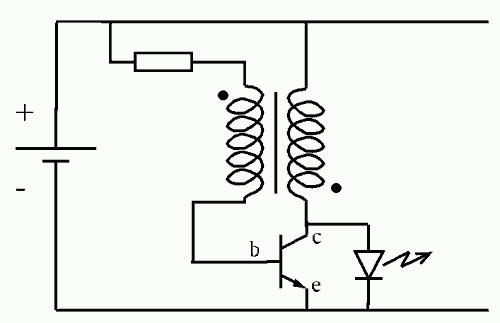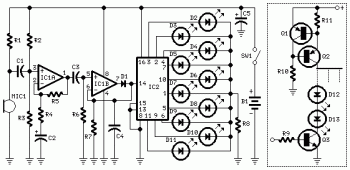
Programmable Unijunction Transistor (PUT) Flasher Circuit

This is a simple circuit that illustrates the function of the programmable unijunction transistor. It can be quickly wired on a proto-board.
The circuit utilizes a programmable unijunction transistor (PUT) to demonstrate its operation as an oscillator. The PUT, which is a three-terminal device, is capable of generating a pulse output when a specific threshold voltage is exceeded. This characteristic makes it suitable for applications such as timing circuits and flashers.
In the schematic, the PUT is connected in a basic flasher configuration. The circuit typically includes a resistor-capacitor (RC) network that determines the oscillation frequency. The capacitor charges through the resistor until the voltage across it reaches the gate trigger voltage of the PUT. At this point, the PUT turns on, allowing current to flow through the load (often an LED or a small bulb) and discharging the capacitor. Once the capacitor discharges below a certain threshold, the PUT turns off, and the cycle repeats.
Key components in the circuit include the PUT, a resistor (R) for current limiting, a capacitor (C) for timing, and a load (such as an LED). The values of R and C can be adjusted to modify the flashing rate of the output. The circuit can be easily assembled on a proto-board, allowing for rapid prototyping and experimentation.
Proper attention should be given to the power supply voltage and the ratings of the components to ensure reliable operation. The circuit can serve as an educational tool for understanding the behavior of programmable unijunction transistors in oscillating applications.This is simple circuit that illustrates the function of the programmable unijunction transistor. It may be quickly wired on a proto-board. PUT Flasher Spec..
The circuit utilizes a programmable unijunction transistor (PUT) to demonstrate its operation as an oscillator. The PUT, which is a three-terminal device, is capable of generating a pulse output when a specific threshold voltage is exceeded. This characteristic makes it suitable for applications such as timing circuits and flashers.
In the schematic, the PUT is connected in a basic flasher configuration. The circuit typically includes a resistor-capacitor (RC) network that determines the oscillation frequency. The capacitor charges through the resistor until the voltage across it reaches the gate trigger voltage of the PUT. At this point, the PUT turns on, allowing current to flow through the load (often an LED or a small bulb) and discharging the capacitor. Once the capacitor discharges below a certain threshold, the PUT turns off, and the cycle repeats.
Key components in the circuit include the PUT, a resistor (R) for current limiting, a capacitor (C) for timing, and a load (such as an LED). The values of R and C can be adjusted to modify the flashing rate of the output. The circuit can be easily assembled on a proto-board, allowing for rapid prototyping and experimentation.
Proper attention should be given to the power supply voltage and the ratings of the components to ensure reliable operation. The circuit can serve as an educational tool for understanding the behavior of programmable unijunction transistors in oscillating applications.This is simple circuit that illustrates the function of the programmable unijunction transistor. It may be quickly wired on a proto-board. PUT Flasher Spec..







